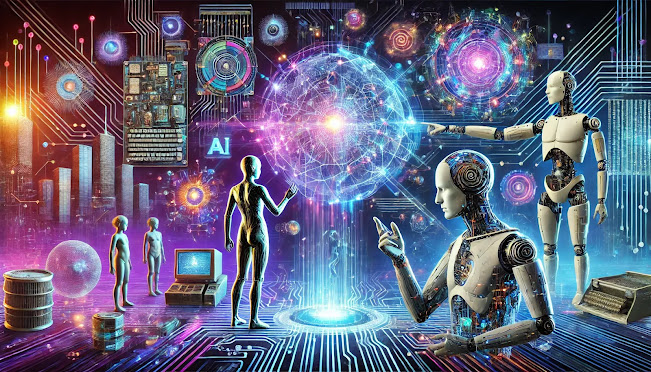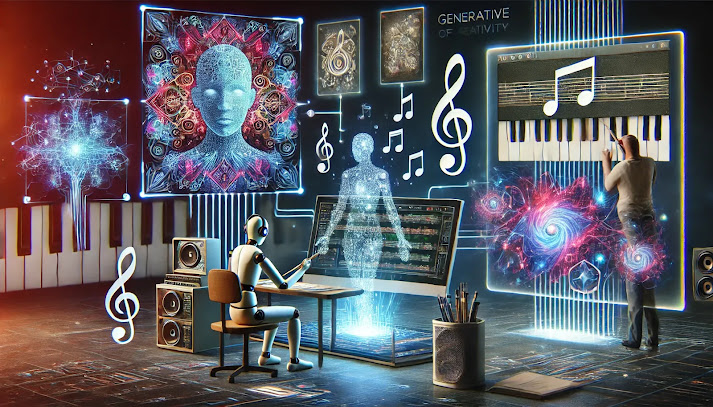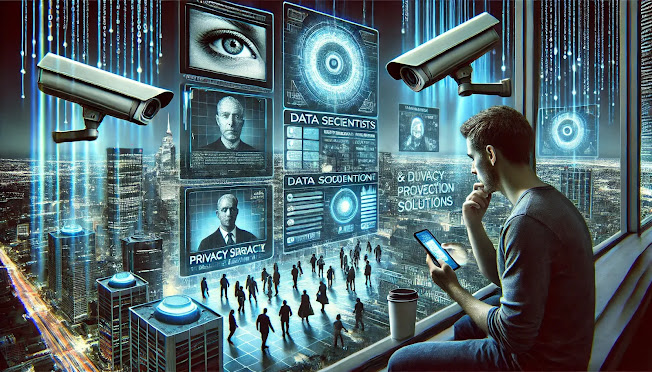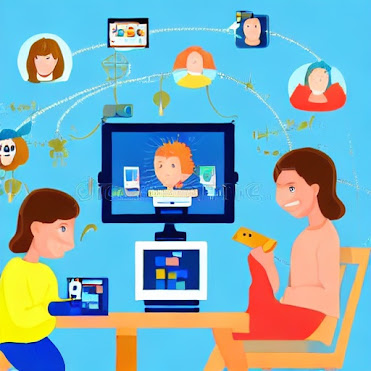The Evolution of AI: Shaping The Future
What is artificial Intelligence?
AI refers to the simulation of human intelligence in machines that are programmed to think, learn, and adapt. These systems are designed to perform tasks that typically require human intelligence, such as problem-solving, decision-making, language understanding, and even creativity. AI can be categorized into two main types:
1. Narrow AI (Weak AI)
Narrow AI, or Weak AI, is a type of artificial intelligence that is built to do one specific job really well. It cannot think or learn beyond what it is designed for. Unlike human intelligence, which can solve many different problems, Narrow AI focuses only on its assigned task.
2. General AI (Strong AI)
General AI, also called Strong AI, is an advanced type of artificial intelligence that aims to think and learn like a human. Unlike Narrow AI, which can only do specific tasks, General AI would be able to understand, learn, and solve problems across different areas, just like people do.
To develop AI, researchers use different techniques, such as machine learning (teaching computers to learn from data), deep learning (mimicking how the human brain works), natural language processing (helping AI understand and respond to language), and computer vision (allowing AI to "see" and interpret images or videos).
1. The Birth of AI (1950s–1960s)
The idea of artificial intelligence (AI) started gaining attention in the 1950s and 1960s. The term "artificial intelligence" was first used in 1956 at the Dartmouth Conference, a meeting where scientists gathered to discuss creating machines that could think like humans. This event is considered the official birth of AI.
Two key figures in AI's early development were Alan Turing and John McCarthy. Alan Turing, a British mathematician, proposed that machines could simulate human thinking and even created the Turing Test to measure if a machine could behave like a human in conversation. John McCarthy, an American computer scientist, helped develop the first AI programming language and played a big role in pushing AI research forward.
During this time, scientists believed AI could soon match human intelligence, but due to limited technology, progress was slow. However, this early work laid the foundation for modern AI advancements.
2. The AI Winter (1970s–1980s)
During the 1970s and 1980s, AI research faced major setbacks in what became known as the "AI winter." Initially, scientists were excited about the possibilities of artificial intelligence, but progress was much slower than expected. Computers at the time were not powerful enough to handle complex AI tasks, and many early predictions about AI’s capabilities turned out to be too ambitious.As a result, governments and businesses lost confidence in AI and started cutting funding for research. Many AI projects were abandoned, and interest in the field declined. Without enough financial support, AI development slowed down significantly.
However, despite this difficult period, some researchers continued working on AI, improving algorithms and exploring new ideas. Their persistence helped AI survive, and in the 1990s, advancements in computing power and data storage reignited interest in artificial intelligence, leading to its eventual comeback.e
3. The Rise of Machine Learning (1990s–2000s)
During the 1990s and 2000s, AI research made a strong comeback, mainly due to improvements in computers, data storage, and algorithms. Scientists realized that instead of trying to program machines with fixed rules, they could develop systems that learn from data on their own. This approach became known as machine learning.
One major breakthrough was the use of neural networks, which are inspired by how the human brain works. These networks allowed computers to recognize patterns, make predictions, and improve their performance over time. Machine learning was used in many real-world applications, such as spam filters, speech recognition, and early recommendation systems.
With the rise of the internet, massive amounts of data became available, helping AI systems learn better and faster. As computers grew more powerful, machine learning became the foundation for modern AI, paving the way for future breakthroughs in automation, robotics, and deep learning.
4. The Deep Learning Revolution (2010s–Present)
From the 2010s onward, deep learning has revolutionized artificial intelligence. Deep learning is a more advanced form of machine learning that uses neural networks with many layers, allowing AI to process vast amounts of data and improve its accuracy. This has led to major breakthroughs in areas like language processing, image recognition, and decision-making.
AI models like GPT-4, DeepSeek-V3, and others have shown impressive abilities in understanding and generating human-like text, recognizing images, and even making complex decisions. These models power virtual assistants, chatbots, self-driving cars, and medical diagnosis tools.
Deep learning became possible because of stronger computers, cloud computing, and access to massive datasets. Companies like Google, OpenAI, and DeepMind have pushed AI research forward, making AI more powerful and useful in everyday life. Today, AI continues to evolve, bringing both exciting possibilities and challenges for the future.
Key Areas of AI Development
Today, AI is being applied across a wide range of domains. Here are some of the most impactful areas:
1. Natural Language Processing (NLP)
NLP Natural Language Processing (NLP) is a type of artificial intelligence that helps computers understand and use human language. It allows machines to read, listen, and even respond in a way that feels natural to people.NLP is used in many everyday applications like chatbots the ones used in customer service, they rely on NLP to answer questions and assist users. Translation services, such as Google Translate, use NLP to convert text from one language to another. Sentiment analysis helps businesses understand customer opinions by analyzing reviews and social media posts. Even creative writing tools, like AI-powered story generators, use NLP to assist with content creation.
Recent improvements in large language models (LLMs), like GPT-4, have made AI even better at understanding context, emotions, and complex conversations. These advancements allow AI to engage in more meaningful and human-like interactions, making it a valuable tool in many industries.n
2. Computer Vision
Computer Vision is a type of artificial intelligence that helps machines "see" and understand images and videos, just like humans do. It allows computers to recognize faces, objects, and patterns, making it useful in many fields.One common use of computer vision is facial recognition, which helps unlock phones, verify identities, and enhance security.
In medical imaging, AI can analyze X-rays and MRI scans to detect diseases with high accuracy, assisting doctors in diagnosing patients faster. Autonomous vehicles use computer vision to detect obstacles, read traffic signs, and navigate safely. Even in the creative world, AI-powered tools can generate stunning digital artwork.
3. Reinforcement Learning
Reinforcement Learning (RL) is a way of training AI by letting it learn from trial and error, just like humans do when figuring out new tasks. The AI gets rewards for making good choices and penalties for mistakes, helping it improve over time.This method has led to major breakthroughs in different areas like robotics, where RL helps robots learn how to walk, grasp objects, and perform tasks without being directly programmed for every step. In gaming, AI models like AlphaGo have defeated human champions by learning strategies through experience.
4. Generative AI
Generative AI is a type of artificial intelligence that can create new content, such as text, images, music, and even computer code. Instead of just analyzing or recognizing data, generative AI produces original works based on the information it has learned.Popular tools like DALL·E (which generates images from text descriptions), MidJourney (an advanced AI art tool), and ChatGPT (which creates human-like text) show how AI is expanding creative possibilities. Musicians use AI to compose songs, developers use it to generate code, and writers use it to brainstorm ideas or create entire stories.
Generative AI is changing industries by making creative work faster, more accessible, and highly customizable. While it is a powerful tool, it also raises questions about originality, ethics, and the role of human creativity in the future. Despite these challenges, generative AI continues to push the boundaries of innovation in many fields.
5. AI in Healthcare
AI in Healthcare is transforming the medical field by making diagnostics, drug discovery, and treatments more accurate and efficient. AI-powered systems can analyze vast amounts of medical data, helping doctors detect diseases early and recommend the best treatment plans.For example, AI diagnostic tools can scan medical images, such as X-rays and MRIs, to identify conditions like cancer with accuracy similar to human experts.
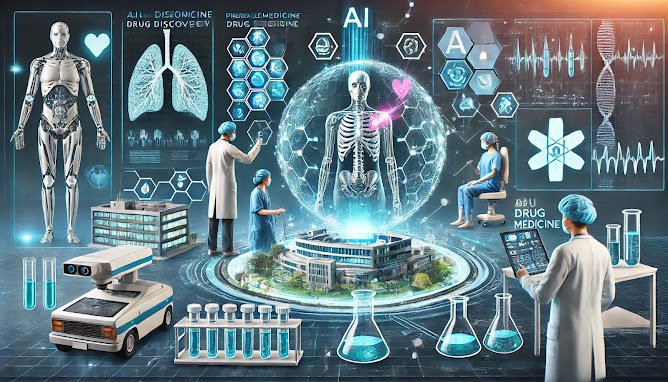 In drug discovery, AI speeds up the process of finding new medicines by analyzing data and predicting which compounds might be effective. AI also enables personalized medicine, where treatments are tailored to a patient's genetic makeup and medical history.
In drug discovery, AI speeds up the process of finding new medicines by analyzing data and predicting which compounds might be effective. AI also enables personalized medicine, where treatments are tailored to a patient's genetic makeup and medical history.
Additionally, AI-powered robotic assistants are now assisting in surgeries, providing greater precision and reducing risks. With continuous advancements, AI is making healthcare faster, safer, and more accessible, improving patient care worldwide.
6. AI in Business
AI in Business is transforming industries by making processes faster, smarter, and more efficient. Companies use AI to automate repetitive tasks, analyze large amounts of data, and improve decision-making.For example, customer service chatbots handle inquiries 24/7, reducing wait times and improving customer experience. Predictive analytics helps businesses forecast trends, manage inventory, and personalize marketing campaigns. AI-powered tools also assist in financial analysis, fraud detection, and even human resources by screening job applications.
In manufacturing, AI-driven robots automate production lines, while in retail, AI helps recommend products based on customer behavior. AI is also revolutionizing supply chain management by optimizing logistics and reducing costs.
With AI, businesses can boost productivity, reduce errors, and stay competitive in a rapidly changing world. As AI technology advances, its impact on business will continue to grow, driving innovation and smarter decision-making across all sectors.u
The Impact of AI on Society
AI is transforming society in profound ways, offering both opportunities and challenges.
Positive Impacts:
- Healthcare Advancements
AI in Healthcare Advancements is transforming the medical field by making diagnostics faster, more accurate, and proactive. AI-powered tools can analyze medical images like X-rays, MRIs, and CT scans to detect diseases early, including cancers and neurological disorders, sometimes even before symptoms appear.
In drug development, AI speeds up the discovery of new medicines by analyzing vast amounts of data to predict which compounds might be effective, reducing the time it takes to bring new treatments to patients. AI also helps in personalized medicine, tailoring treatments to an individual's genetic makeup for more effective care.
Additionally, AI-powered virtual health assistants and robotic surgeries are making healthcare more efficient, reducing errors, and improving patient outcomes. As AI continues to evolve, it is revolutionizing healthcare by making it more accessible, precise, and life-saving for people around the world.
- Economic Growth
AI is transforming industries by driving innovation, creating new businesses, and generating jobs. AI-powered solutions are making companies more efficient, reducing costs, and opening up new opportunities in sectors like healthcare, finance, manufacturing, and technology.Startups and tech firms are developing AI-based products and services, leading to the growth of entirely new industries, such as AI-driven automation, robotics, and smart analytics. Businesses use AI for better decision-making, personalized marketing, and predictive analytics, helping them grow faster and stay competitive.
- Convenience
AI and Convenience is transforming everyday life by making tasks easier, faster, and more efficient. Smart home devices, such as AI-powered thermostats, lighting systems, and security cameras, allow people to control their homes with voice commands or mobile apps.Virtual assistants like Alexa, Siri, and Google Assistant help with scheduling, reminders, and even answering questions, making daily routines smoother.
AI also improves personalized recommendations, whether it's suggesting movies on Netflix, curating music playlists, or recommending products based on shopping habits.From self-driving cars to AI-powered chatbots handling customer service, AI is reducing effort and saving time. Smart refrigerators can track groceries, while AI-powered fitness apps provide customized workout plans.
- Environmental Benefits
Negative Impacts:
- Job Displacement
AI and Job Displacement is a growing concern as automation replaces certain types of jobs, especially those involving repetitive and routine tasks. AI-powered robots and software can perform tasks faster, more accurately, and at a lower cost than humans, leading to job losses in sectors like manufacturing, data entry, and customer service
However, AI is also creating new job opportunities, such as AI specialists, data scientists, and automation engineers. Many companies and governments are investing in reskilling and upskilling programs to help workers transition into new roles.
- Bias and Fairness:
Bias and Fairness in AI is a major concern because AI systems learn from historical data, which may contain biases. If the training data is skewed or unbalanced, AI models can make unfair or discriminatory decisions.For example, facial recognition AI has been found to be less accurate for certain racial and gender groups, leading to potential misidentifications.
In hiring, AI-powered recruitment tools may favor certain demographics over others if past hiring data reflects biases. Similarly, biased loan approval systems can unfairly deny financial opportunities to specific groups.
To address this, developers are working on fair AI algorithms, improving diverse and representative datasets, and using bias detection tools to make AI systems more equitable. Transparency, accountability, and ethical AI development are key to ensuring fair and unbiased AI systems that work for everyone.
- Privacy Concerns
AI relies on vast amounts of data to function effectively, raising serious concerns about privacy and surveillance. Many AI-powered applications, such as facial recognition, smart assistants, and targeted advertising, collect and analyze user data, often without explicit consent. This can lead to unauthorized tracking, data breaches, and misuse of personal information by companies, governments, or cybercriminals.
AI-driven surveillance systems, such as CCTV cameras with facial recognition, can monitor people’s activities in real time, raising concerns about mass surveillance and the loss of personal freedoms. Additionally, AI algorithms may collect sensitive details, such as medical records, financial transactions, and browsing history, potentially exposing users to identity theft or discrimination.
To protect privacy, governments are implementing stricter data protection laws, such as GDPR and CCPA, while companies develop privacy-focused AI solutions. However, individuals must also take precautions by managing app permissions, using encryption, and being aware of how their data is collected and used.
- Ethical Dilemmas
As AI technology advances, it raises important ethical questions about accountability, transparency, and potential misuse. One major concern is who should be held responsible when AI makes mistakes, such as biased hiring decisions, incorrect medical diagnoses, or self-driving car accidents. Since AI operates based on algorithms, determining accountability can be challenging.
Transparency is another key issue. Many AI models, especially deep learning systems, function as black boxes, meaning their decision-making process is not fully understandable, even by their creators. This lack of clarity raises concerns about fairness and trust in AI-driven decisions.
AI can also be misused for harmful purposes, such as deepfake technology, automated surveillance, and autonomous weapons. Without proper regulations, AI could be exploited for manipulation, privacy invasion, or unethical practices.To address these dilemmas, experts emphasize the need for clear regulations, ethical AI development, and responsible AI use to ensure technology benefits society while minimizing risks.s
Ethical Considerations in AI Development
As AI continues to evolve, it’s crucial to address the ethical implications of its development and deployment. Here are some key considerations:
- Bias and Fairness
AI systems can unintentionally reflect and amplify biases present in their training data. If AI models are trained on unbalanced or non-representative datasets, they may produce unfair or discriminatory outcomes, particularly in areas like hiring, lending, and law enforcement.To ensure fairness, AI developers must use diverse and inclusive training data that represents different demographics, backgrounds, and perspectives. Additionally, ongoing monitoring, evaluation, and bias detection are essential to identify and correct any unintended discrimination.
Regulations, ethical guidelines, and fairness-aware AI techniques are being developed to reduce bias and promote equality in AI applications. The goal is to create AI that serves everyone fairly, without reinforcing existing inequalities.
-Transparency and Explainability
Many AI systems work like a “black box”, meaning we don’t always know how they make decisions. This is a problem, especially in important areas like healthcare, law, and finance, where AI choices can affect people’s lives.To build trust, AI needs to be clear and explainable. People should be able to understand why AI makes certain decisions—whether it’s diagnosing a disease, approving a loan, or helping in a court case.
When AI is easy to understand, it’s also easier to spot mistakes or unfair decisions. Experts use special tools to track AI’s thinking process and make sure it’s working fairly.Many governments and companies are working on rules and standards to make AI more transparent. The goal is to create AI that is safe, fair, and easy to trust for everyone.I
3. Privacy and Security:
PAI systems handle vast amounts of personal data, making privacy and security crucial. If AI is not properly protected, sensitive information like medical records, financial details, and personal conversations could be exposed or misused.
Hackers can also target AI systems, leading to data breaches or manipulated AI decisions. For example, an AI-powered bank system could be tricked into approving fraudulent transactions if not secured properly.
To prevent such risks, companies and governments must use strong encryption, strict data policies, and regular security updates. AI should also follow privacy laws, ensuring users have control over their own data.r
- Accountability
Transparency also plays a big role—companies should explain how their AI systems work and who is responsible if something goes wrong. By ensuring fair and responsible AI use, accountability helps create a safer and more ethical AI future.
- Human-Centric AI
AHuman-Centric AI means designing AI systems that help people rather than replace them. AI should be created to support human decision-making, enhance productivity, and improve daily life instead of taking jobs or causing harm.
For example, in healthcare, AI can assist doctors by analyzing medical scans faster and more accurately, helping them diagnose diseases early. In education, AI can personalize learning for students, making it easier for them to understand difficult subjects. In business, AI can handle repetitive tasks, allowing workers to focus on creative and strategic thinking.
To make AI truly human-centered, developers must ensure that it is fair, transparent, and respects human rights. AI should work alongside people, empowering them rather than replacing them. By focusing on ethical AI development, we can create technology that benefits society, protects jobs, and enhances human well-being instead of causing harm.
The Future of AI
AI systems are becoming smarter and more autonomous, reducing the need for human intervention in areas like self-driving cars and intelligent assistants. Rather than replacing humans, AI will enhance productivity in workplaces, education, and healthcare, fostering efficient collaboration between humans and machines. Ethical considerations will play a crucial role, as governments and organizations push for regulations to ensure fairness, transparency, and privacy protection.
AI will also continue revolutionizing creative fields, assisting in art, music, and design while working alongside human creators. Looking further ahead, some experts predict the possibility of AI surpassing human intelligence, raising profound ethical and safety concerns. While AI’s future is uncertain, its influence on society will be transformative, making responsible development and regulation essential to harness its benefits while mitigating risks.
Conclusion
Artificial Intelligence is not just a technological trend; it’s a transformative force that’s reshaping our world. From healthcare and business to daily life and creativity, AI is driving innovation and offering new possibilities. However, it also raises important questions about ethics, fairness, and the future of work.
As we continue to explore the potential of AI, it’s crucial to approach its development and deployment with care and responsibility. By fostering collaboration between researchers, policymakers, and the public, we can harness the power of AI to create a better future for all.
The journey of AI is far from over, and its ultimate impact will depend on the choices we make today. Let’s ensure that we use this powerful technology to benefit humanity and address the challenges of our time.
Thank you for taking the time to read this article on The Evolution of AI: Shaping The Future. If you found this information helpful, we encourage you to share it with your friends and family. If you have any additional thoughts or questions, please leave a comment below. And don't forget to subscribe to our blog for more informative content like this. Your support is greatly appreciated!



